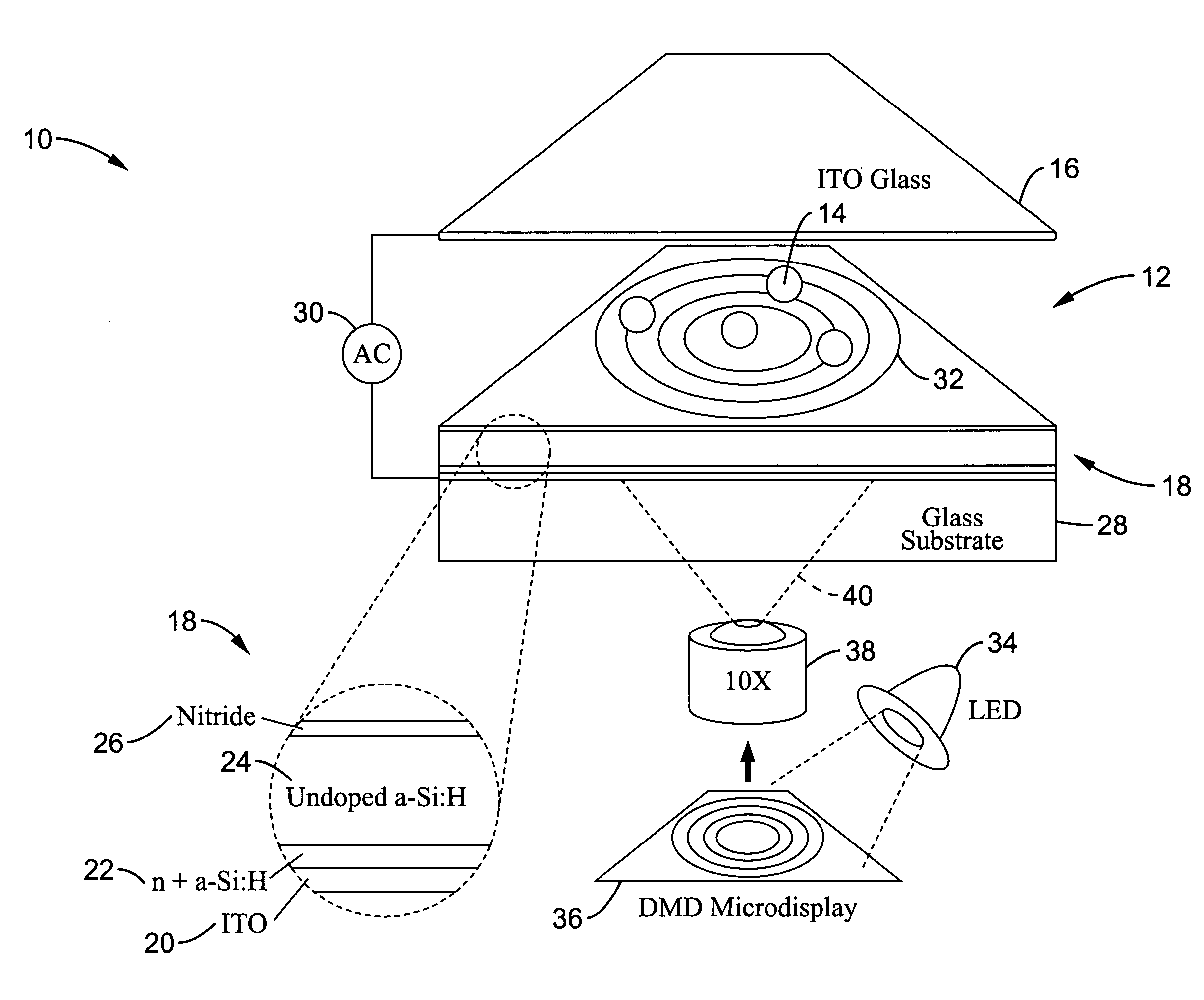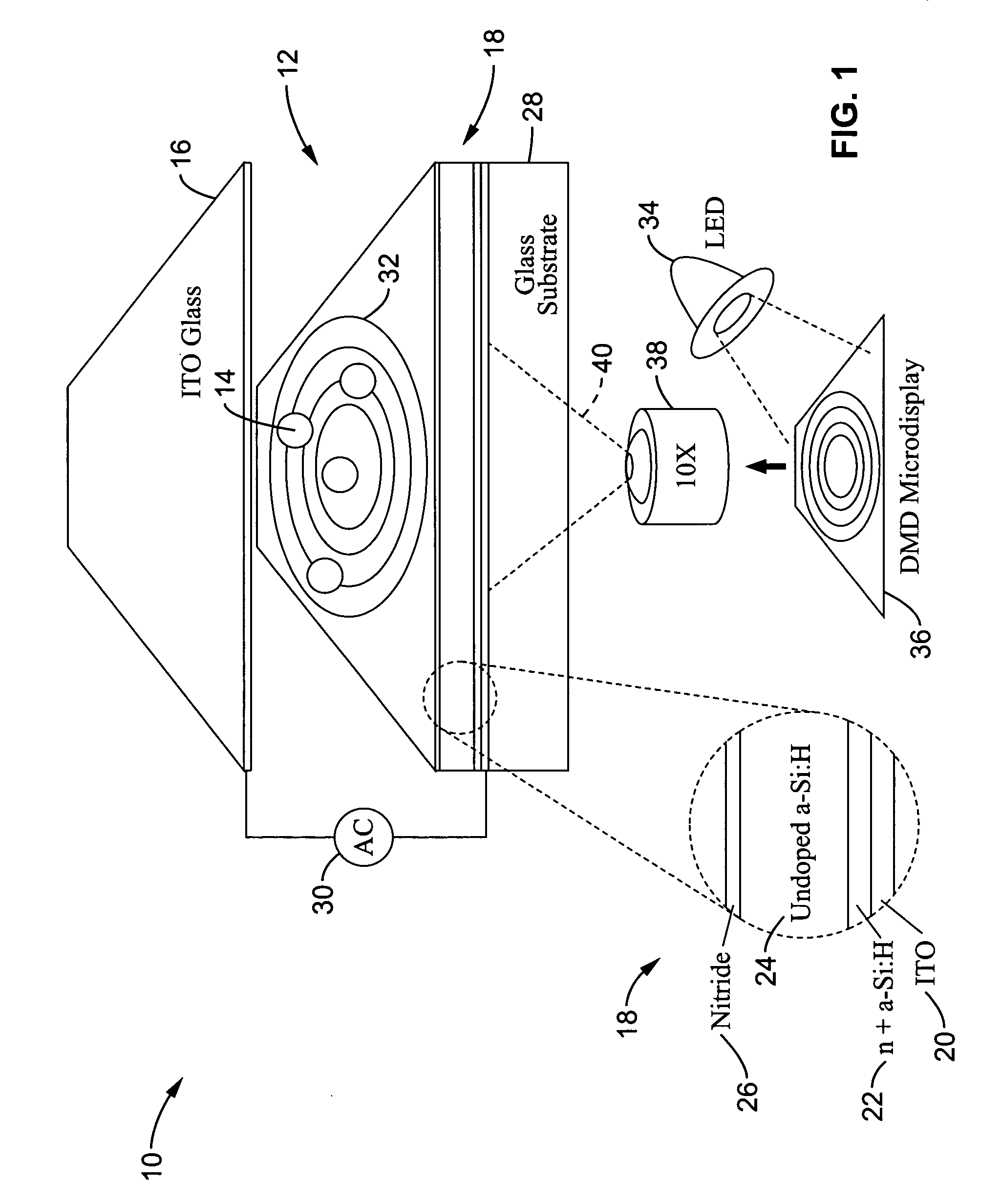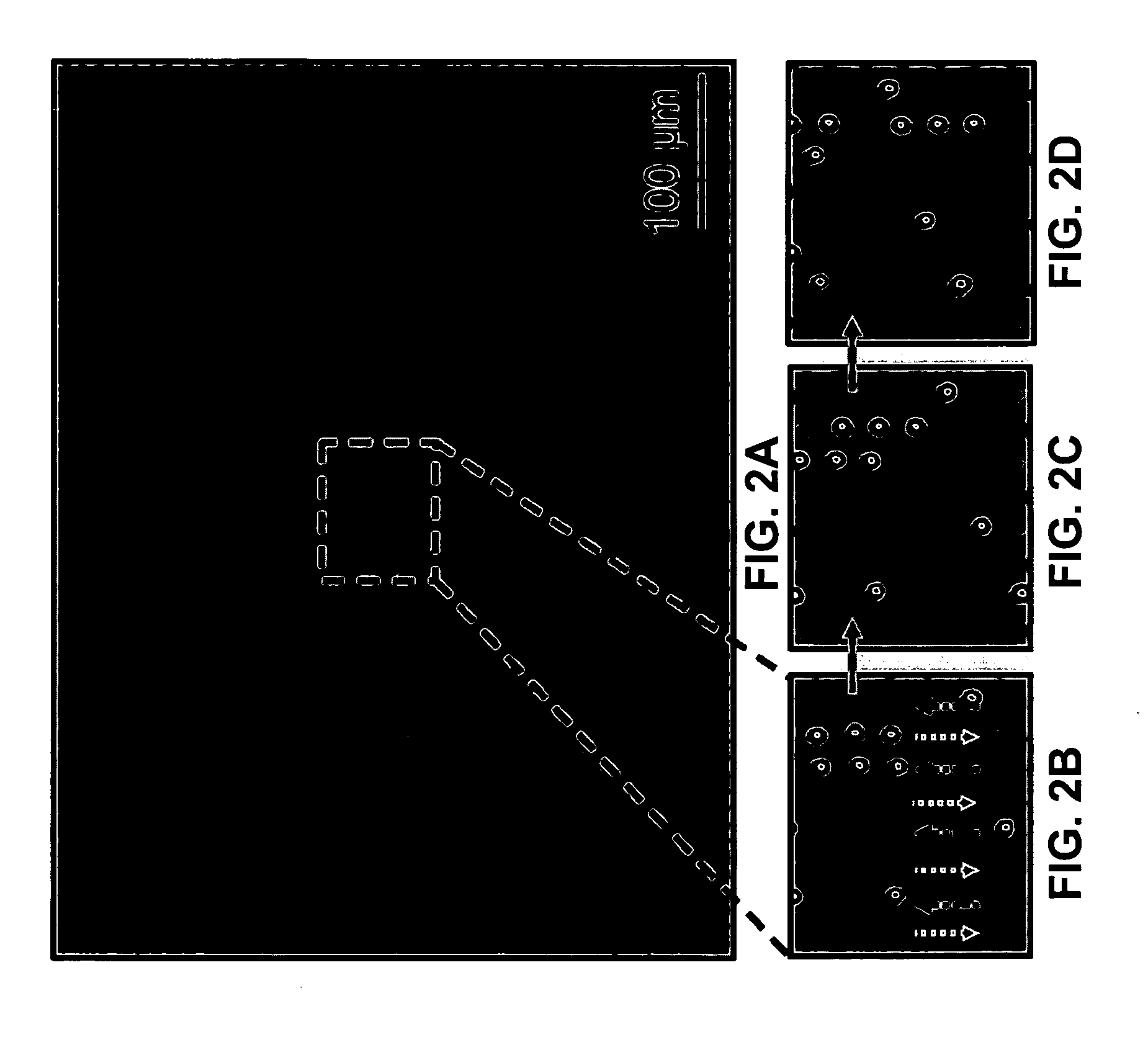Optoelectronic tweezers for microparticle and cell manipulation
a cell and microparticle technology, applied in the field of cell and microparticle manipulation, can solve the problems of inability to achieve high resolution and high throughput of conventional manipulation techniques, optical tweezers, electrokinetic forces (electrophoresis, dielectrophoresis, etc., to achieve high resolution and high throughpu
- Summary
- Abstract
- Description
- Claims
- Application Information
AI Technical Summary
Benefits of technology
Problems solved by technology
Method used
Image
Examples
embodiment 90
[0184]FIG. 11 illustrates an embodiment 90 of the optoelectronic tweezers device with a liquid buffer containing the particles of interest between the upper ITO glass layer and the lower photoconductive layer. To separate the top and bottom layers, 100 μm thick spacers (not shown) are utilized.
[0185]In demonstrating the OET device and methods herein the digital micromirror device (DMD) in a light projector was used to image the virtual electrodes. An embodiment of the optoelectronic tweezers device was formed by evaporating a 10 nm thick aluminum film onto a glass substrate to provide electrical contact. A 1 μm thick undoped amorphous silicon (a-Si) photoconductive layer was then deposited, for example by utilizing plasma-enhanced chemical vapor deposition. It should be appreciated that detailed fine-pitched features need not be created on the first and second retention layers, wherein detailed lithographic steps are not necessary. To protect the photoconductive film, a 20 nm thick ...
embodiment 100
[0190]FIG. 12 illustrates, by way of example, a optical setup embodiment 100 for this OET demonstration. Observation of the particles under test is performed preferably utilizing a microscopic imaging system 120, for example a Nikon TE2000U inverted microscope. A CCD camera attached to the observation port of the microscope recorded images and video of these demonstrations and tests. To produce the electric field necessary for DEP, an AC voltage of approximately 10VPP at 100 kHz (i.e., Agilent® 33120A) was applied across the top ITO surface and the bottom photoconductive surface of the OET device.
[0191]FIGS. 13A-13B illustrate self-organization of 45 μm polystyrene spheres into an array configuration. After the initial grid illumination shown in FIG. 13A, the randomly arranged particles move towards the dark areas via negative DEP. After five seconds, all particles are contained within the array cells as shown in FIG. 13B.
[0192]The self-organization of randomly distributed 45 kHz po...
embodiment 210
[0248]FIGS. 27A-27B illustrate an OET embodiment 210 in FIG. 27A with an Illustration of the light induced dielectrophoresis mechanism in FIG. 27B.
[0249]The term Re[K*(ω)] can have any value between 1 to −½, depending on the applied AC frequency and the polarizability of the particle and the medium. If Re[K*(ω)]<0, it is called negative DEP with the direction of the DEP force towards lower electric field. Since the DEP force is proportional to the gradient of the square of the applied electric field, a highly non-uniform electric field is desired to achieve a higher trapping force. In the following experiment a light induced negative DEP force is demonstrated.
[0250]In FIG. 27A, the structure of the optoelectronic tweezers are shown with a liquid solution 12 containing the particles sandwiched between two surfaces separated by a gap spacing of 100 μm. The top surface 16 is a commercial ITO glass. The bottom surface is a glass substrate 28 coated with three pattern-less layers: a 2000...
PUM
| Property | Measurement | Unit |
|---|---|---|
| diameter | aaaaa | aaaaa |
| optical actuating power | aaaaa | aaaaa |
| diameters | aaaaa | aaaaa |
Abstract
Description
Claims
Application Information
 Login to View More
Login to View More - R&D
- Intellectual Property
- Life Sciences
- Materials
- Tech Scout
- Unparalleled Data Quality
- Higher Quality Content
- 60% Fewer Hallucinations
Browse by: Latest US Patents, China's latest patents, Technical Efficacy Thesaurus, Application Domain, Technology Topic, Popular Technical Reports.
© 2025 PatSnap. All rights reserved.Legal|Privacy policy|Modern Slavery Act Transparency Statement|Sitemap|About US| Contact US: help@patsnap.com



